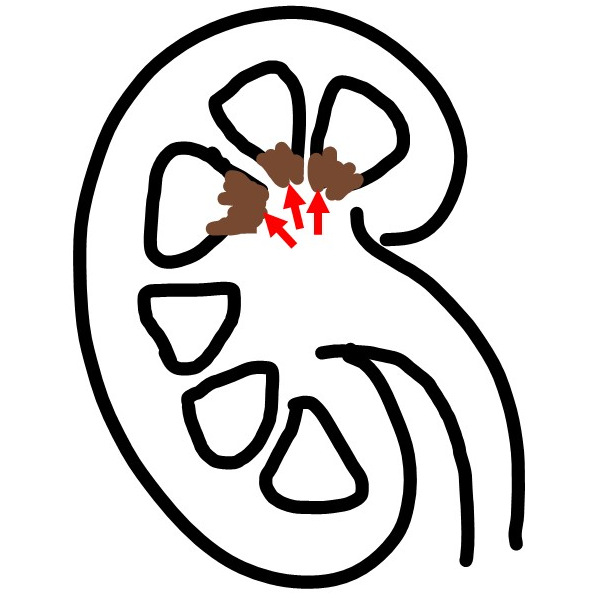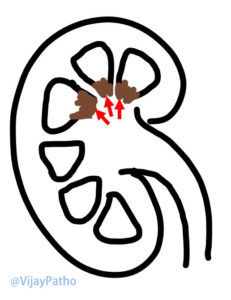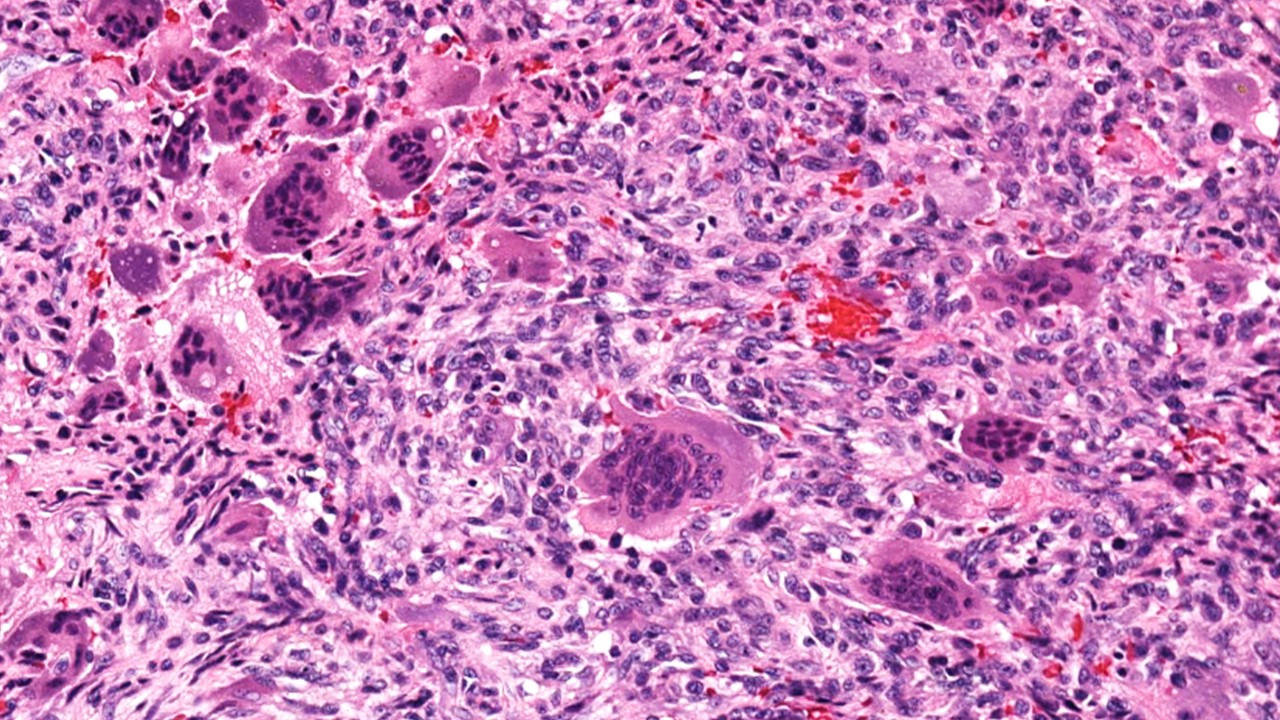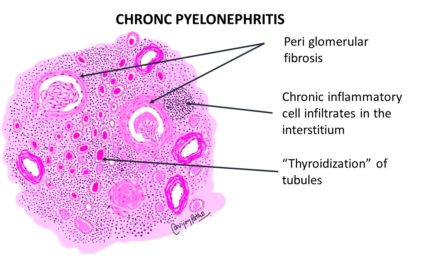Renal Papillary Necrosis
1. What is Renal Papillary Necrosis
Renal papillary necrosis is a condition where there is death of the renal papillae. These papillae can be necrosed either partially or completely. The area where the collecting duct enters the kidneys are the renal papillae and these are the areas where the urine flows into the ureters.
2. What are the conditions associated with Renal papillary necrosis
Renal papillary necrosis was originally described in Diabetes patients. Although Analgesic abuse is the most common cause , there are various conditions/causes associated with renal papillart necrosis. These conditions are best remembered by the mneumonic “SPORADIC”
These Include
S-Sickle cell disease/Systemic vasculitis
P-Pyelonephritis
O-Obstruction
R-Renal Vein Thrombosis/Renal transplant rejection
A– Analgesic nephropathy
D– Diabetic Nephropathy
I-Infections (tuberculosis)
C– Cirrhosis/Chronic liver disease
3. What are the gross findings of Renal papillary necrosis
The Renal papillary necrosis is seen as the pale white necrotic areas involving some or all renal papillae. Each renal papillae can be either partially or completely involved.
Diagrammatic representation of Renal Papillary Necrosis.
4. What are the microscopic features of Renal Papillary Necrosis
On microscopic examination, renal papillary necrosis is characterized by coagulative necrosis of the renal papilla and also involving the medullary pyramids. These foci can later become infected and can result in abscess formation. These necrotic papillae can result in obstruction irrespective of whether they are infected or not.






